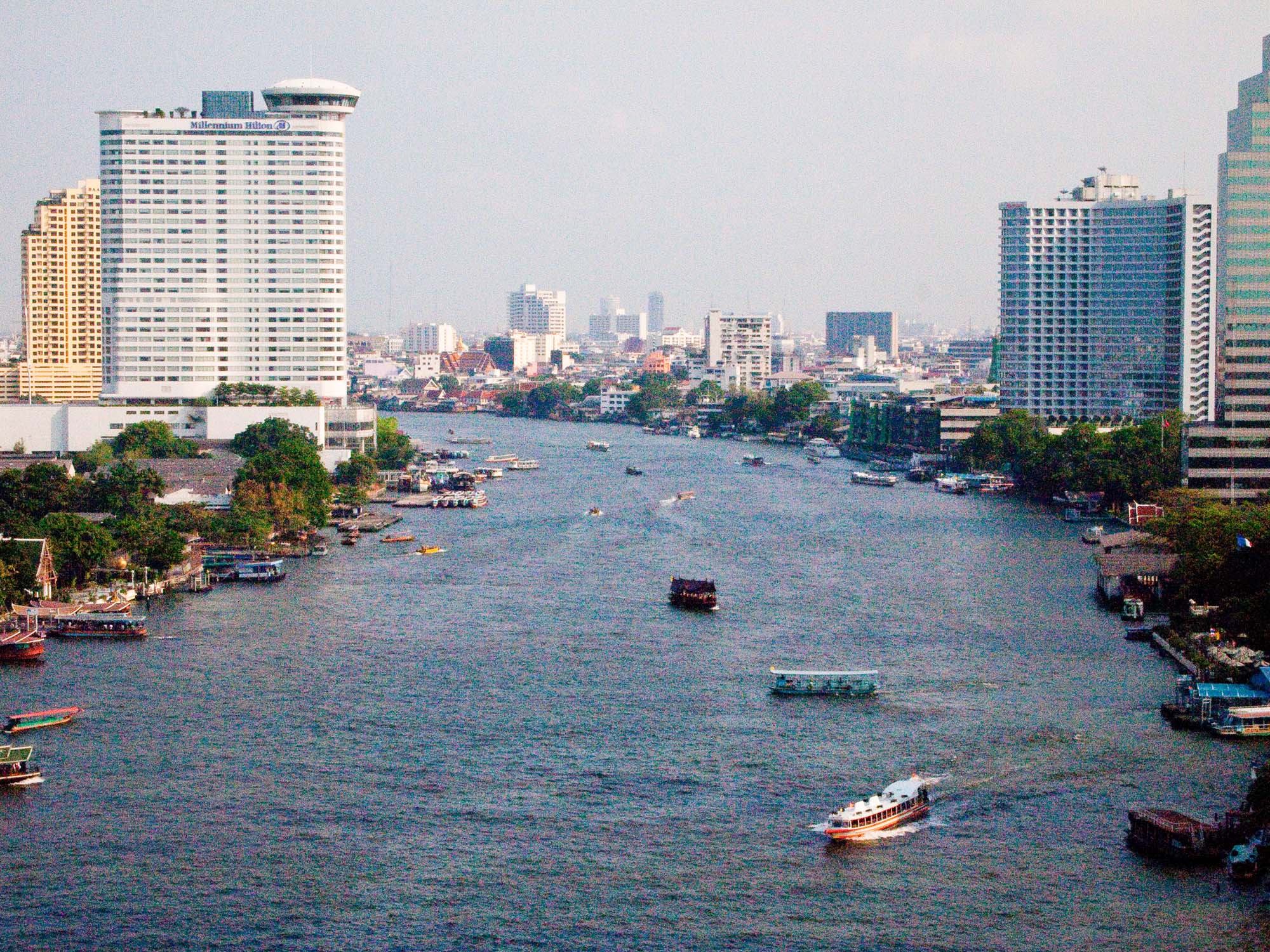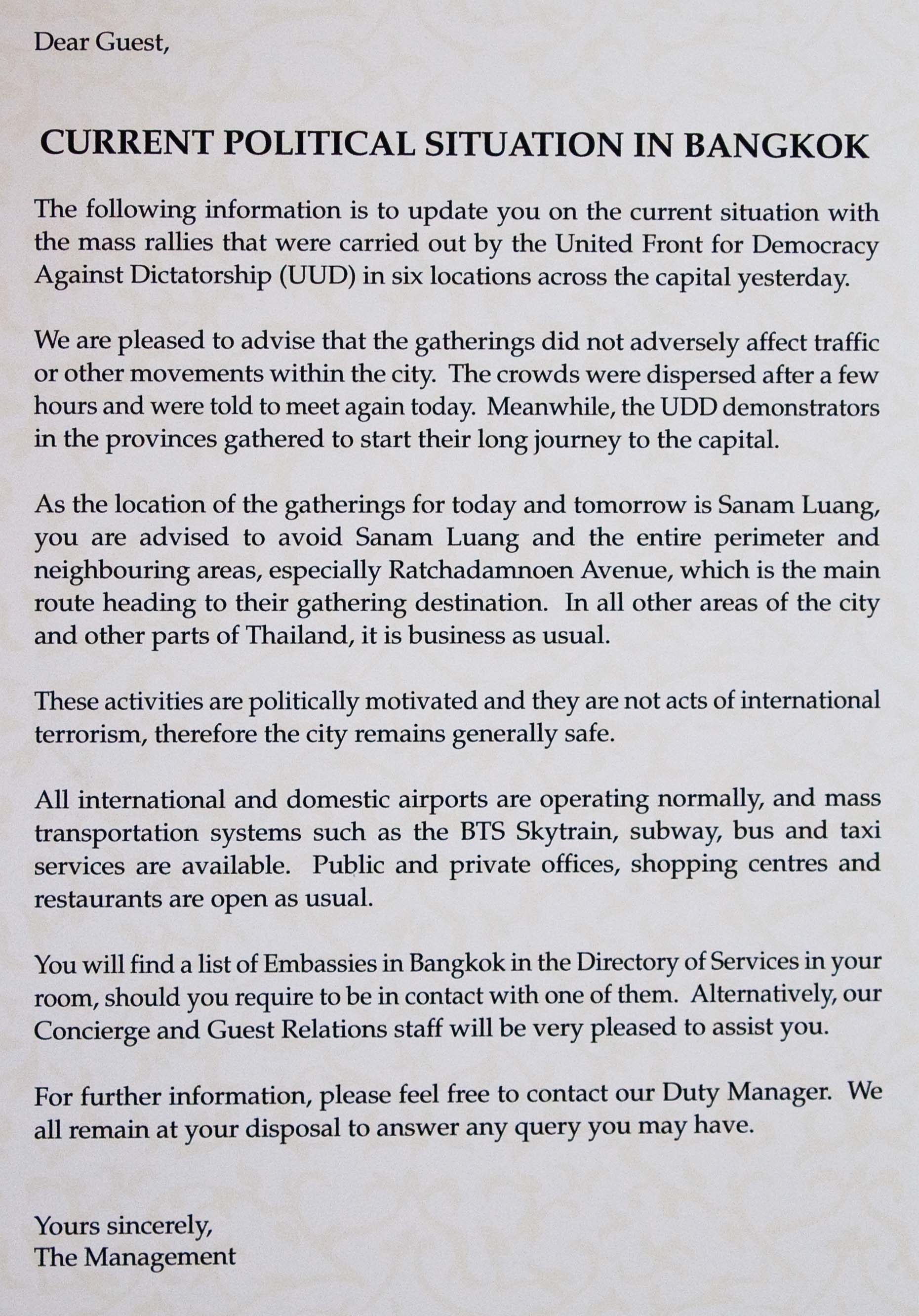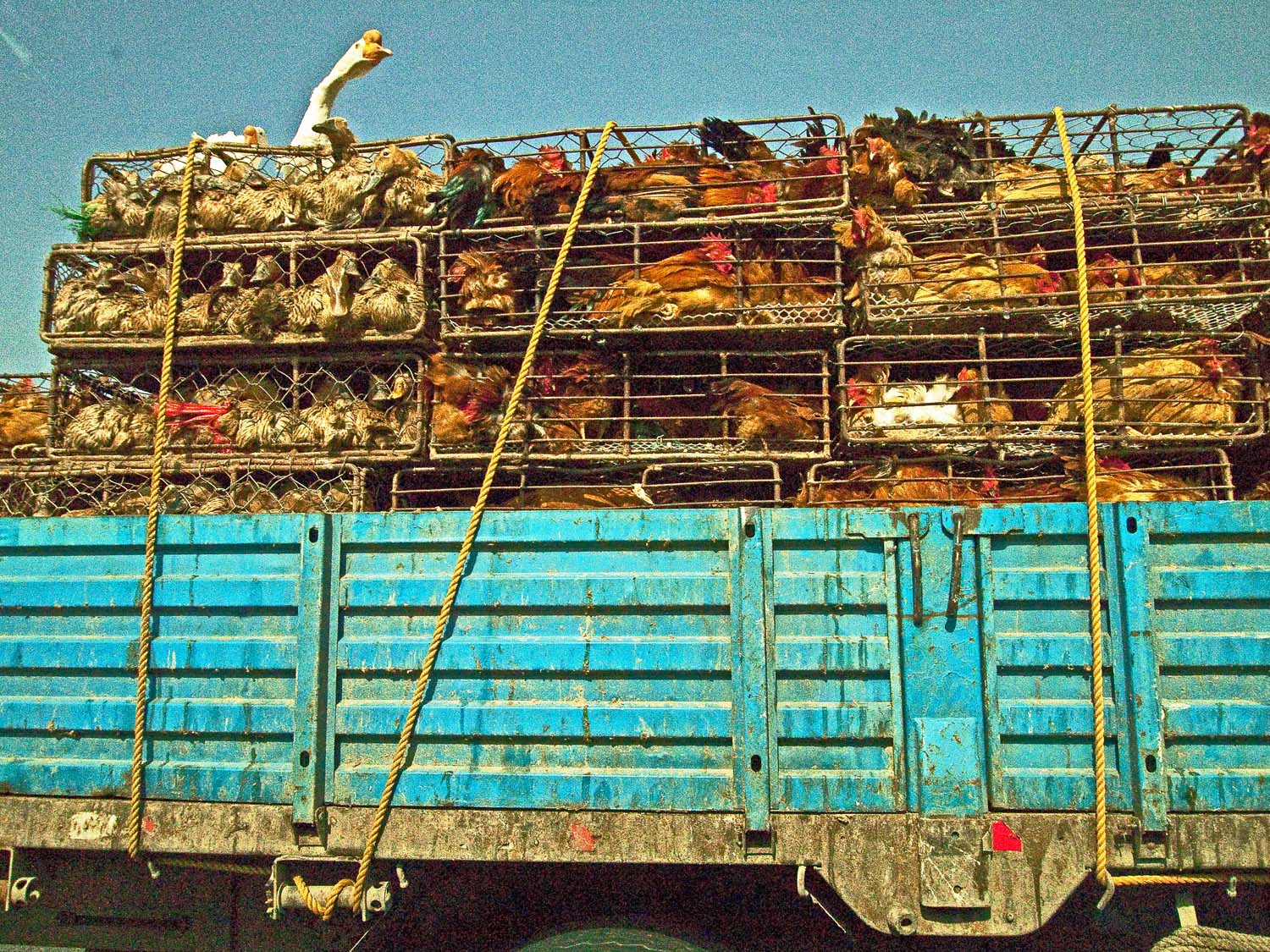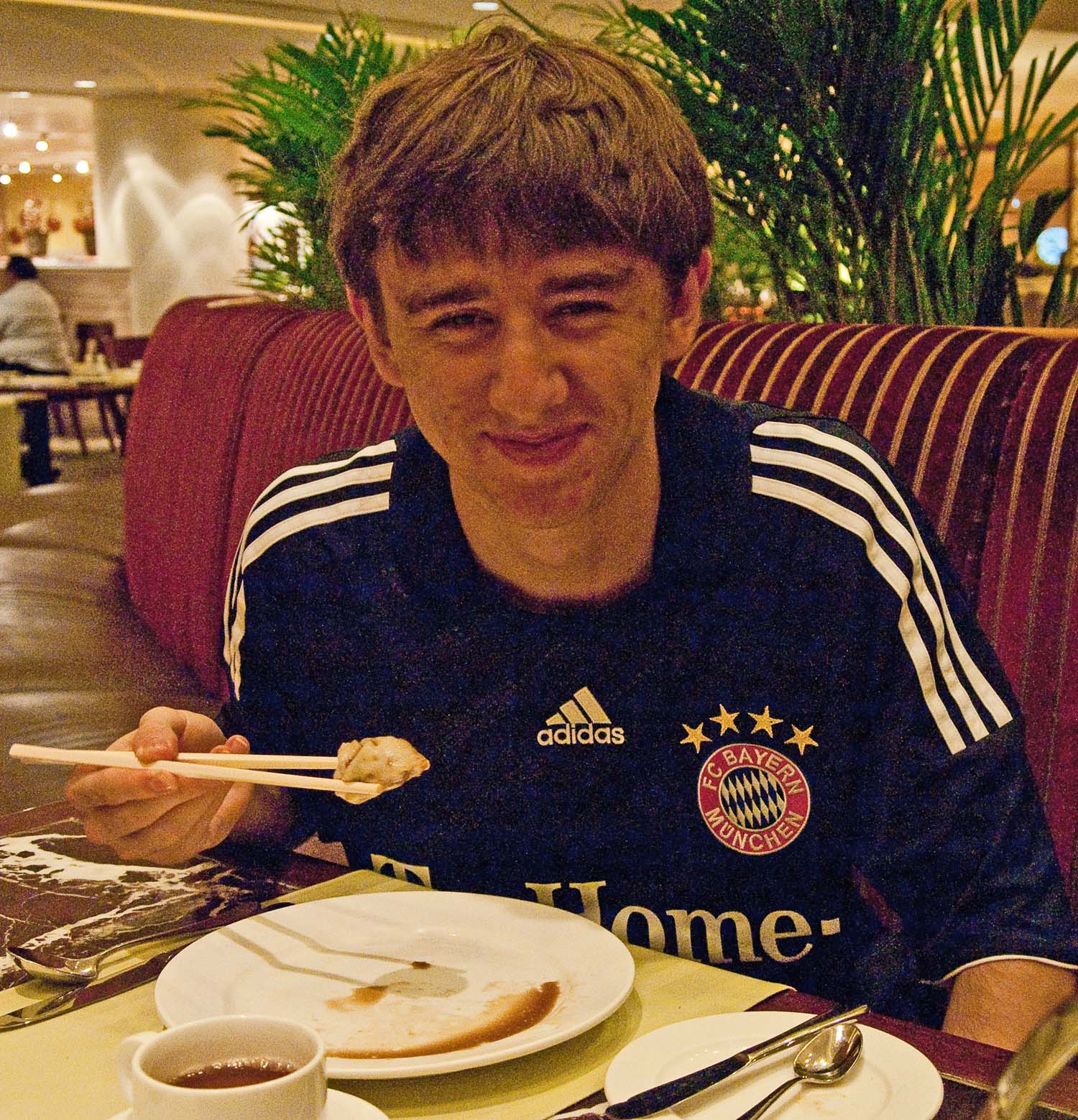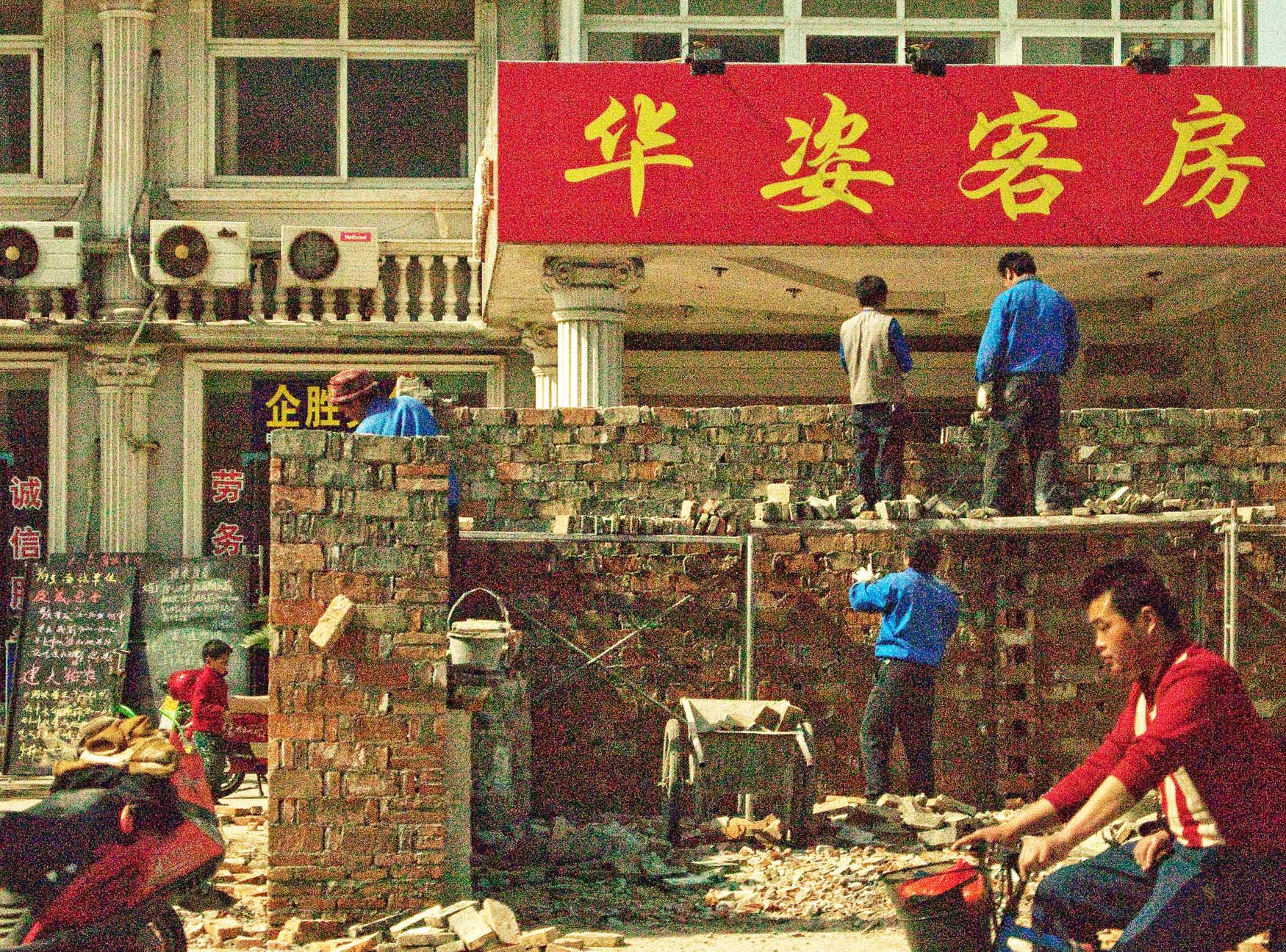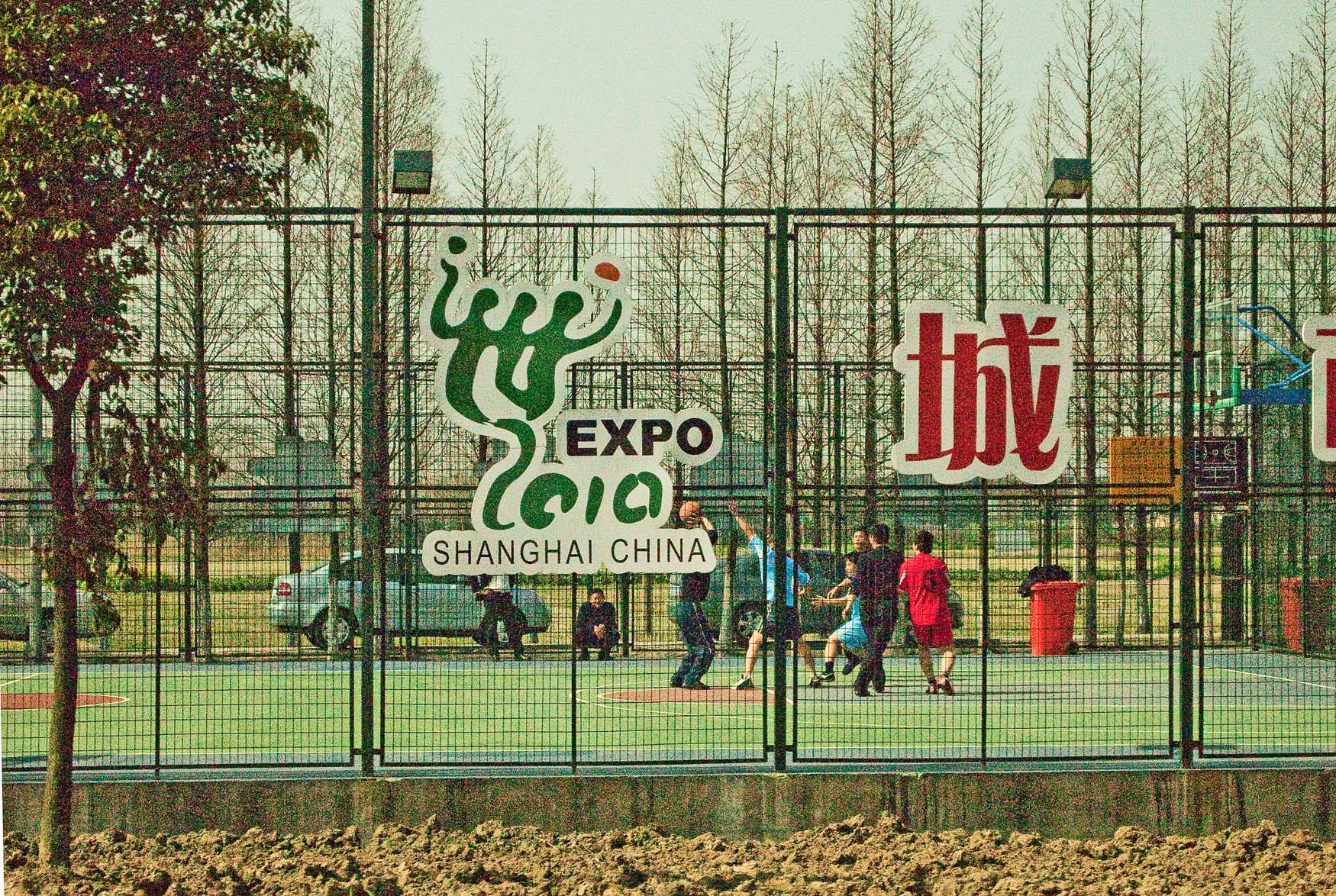commuting in Bangkok
Shanghai, Xiamen, Guangzhou
We’re incredibly lucky to see these sights and spend time with our gracious hosts.
BTW, add revaluing the Yuan to make Chinese goods more expensive for Americans in order to spur investment in American jobs to the list of idiotic and naive ideas to come out of the Obama administration. Yeah, let’s have Americans pay artificially high prices for foreign goods to remove marginal capital from their pockets, while we increase their taxes to pay for the socialized health care we shove down their throats, so they feel like becoming entrepreneurs to create jobs that the feds can regulate to death and suck out more funding for the welfare state. Just who’s going to buy these proposed American goods that are expected to cost more? Let’s see, in Obamanomics, comparative advantage means the privilege of paying more for less. I guess we’re all supposed to feel so good about our new socialism that we’ll just overlook our own impoverishment.
While that sinks in, here’s some more pics to ponder:
—————————————————————————————–
Shanghai
—————————————————————————————— [Read more…]
internet will find a way
Lots of grab-shot images to upload when time permits. Shanghai environs have changed drastically in two years. Factories of every sort of fabrication, assembly and manufacture of every item imaginable saturate the land. We’re either getting used to the frenetic manner of Chinese driving, or perhaps Chinese drivers are settling down a bit. Still lots of horns, lights, random intersection crossings, near head-on collisions between cycles and cars and various other flirtations with disaster, but the overriding traffic law here seems to be, “No harm, no foul.” The second law of the Chinese model traffic code would go something like, “Flashing lights and honking horns are simply data and do not carry an emotional message, regardless of how insistently they are employed.” Twitter and Facebook appear to be blocked at this location in Shanghai though I think they were available in Shenzhen and certainly were in Hong Kong. Google US is available though the news (CNN) said that Google will pull out of China next month. I think that refers to the Chinese language Google.cn which I’ve read that the Chinese don’t use much anyway. I hope English speakers can still access US Google though if US Google is no longer maintained for Chinese references, it would seem to become less relevant over time for English speakers over here. Conclusion: Mandarin lessons are in order. Headed to Xiamen this afternoon for a day/night then on to Kuala Lumpur. Not much time this trip to smell the roses though we’re accomplishing the mission and everyone’s healthy.
Noted item from today’s Shanghai Daily, pg. A9:
“The health care reform program would affect nearly every American and remake one-sixth of the US economy. For the first time, Americans would have health insurance.”
That sort of misinformation is just not helpful.
first impressions
The day began today in China (for us) with……Fox News! and the O’Reilly Factor–which works well as a morning talk show!
Fox News. Communist China. Go figure. Maybe it has something to do with Obama and Napolitano both on Fox today? Nice to see the left venturing outside their comfort zones on CNN and MSNBC.
(Update: Over in Shenzhen this afternoon–crossing the border from Hong Kong to China, we said goodbye to Fox News. 13 years into the 100 year merger of Hong Kong and China, looks like China proper will have to wait a little longer for Fox News.)
We read some illuminating articles in the China Daily (state) newspaper in transit. In a story about closing down ubiquitous unlicensed health clinics in China, the China Daily noted, “More than half of the rural population of China does not have adequate medical insurance.” The rural population is around 800 million. And migrant workers are not reimbursed for health care because people only get insurance reimbursement for fees incurred in the region they are from, not fees incurred in the region where they live and work. So, the government is trying to shut down market health care alternatives while also using health insurance as a tool to control migration.
On the next page of the 3/16/10 China Daily (page 9), an editorial says, “In the United States, the epitome of Western culture, it is difficult for a person without health insurance or enough money to get medical treatment. Visitors to the US, especially from poorer countries may be refused access to healthcare.” Well, this is simply misinformation. EMTALA guarantees health care to the point of stabilization to anyone who walks into a hospital emergency room. Moreover, it’s an unfunded mandate. Hospitals don’t get reimbursed for care provided under EMTALA.
It would be more productive for China to focus on health care provision for its uninsured and insured people than to obfuscate their own problems with straw man allegations about the U.S. system, which, though imperfect, is pretty good.
Jinmao Tower in Shanghai Pudong
Our last night in Asia this trip, we’re staying in Jinmao Tower. I hope to get some colorful pictures later on when the buildings light up. Tomorrow we fly to Toronto. In the spirit of a day of new experiences – and that describes each of our days in China – we rode the Maglev train from the airport. It reached a speed of 431 kph, or 267.82 mph.
Looking out at Shanghai and considering the 19 or so million people living here, it seems that western civilization is moving forward without the west. The Islamic fundamentalists are really out of step in their hatred of America and Great Britain because our countries are no longer at the forefront of western civ. Shanghai has the youth, the population influx, workers willing to do anything 24/7, the money to pay them, the desire to grow, etc. and etc.. American cities seem a little on the quaint side by comparison, and I don’t say that as a criticism, just that we should know where we stand. We will always be the modern cradle of western civilization, and we may remain its theoretical foundation, but as to who is at the forefront, we should not kid ourselves that it’s us. And since it’s not us, and since those who are taking it to the next level have very different views about the roles of individual and state, western civilization may well become something quite different than it was when we directed its growth.
Our country does not have the comparative advantage they have over here (China) of huge population influx, and with the population influx we do have, we’re not integrating them into any kind of growth vision. Right or wrong, having everyone working toward common goals is very unifying. Americans are probably too independent to get on board with a state-sponsored vision, but there’s nothing about our approach that precludes us from voluntarily building a better world for our children. So, how the U.S. gets there must be resolved, but I think I’ve reached a conclusion that we must get somewhere better, more modern, more effective, and more integrated, than where we are today. If we continue to stagnate we will become impoverished, our culture will disappear, and we will become shabby. Our ideals deserve a much better future. And speaking locally (Elbert County), the no-growth country-in-county stagnant vision of the future is a perfect example of a prescription for decline.
North of Yangtze River, Wuhan, Xiantao
Hefei
Hefei, capital of Anhui Province, is getting massive aid to bring it into modernity. Hundreds of thousands of poor workers wend their ways through the old streets while mile after mile of high rise apartments get constructed. Imagine an area the size of Cleveland being built to house 10 million people, all at once, from farmland. No one seems to worry too much about their carbon footprint, they’d just like to get past making footprints in mud.
——————————————————————————————————–
only 1 today
China trip pics
We stopped for a night in Vancouver to break up the trip before heading on to Shanghai.
—————————————————————————————————
These candid shots were taken in the Yuyuan market as people walked by while Henry and I waited for Melanie to complete a few purchases in a nearby store. The market is a wonderful place to just watch people.
———————————————————————————————————-
Other Shanghai shots from the weekend.
————————————————————————————————-
Shanghai, Saturday, July 12th
July 12, 2008 Shanghai
Burney Zhang from Grayline guided us for the day. 28 years old, single, lives with his parents, born and raised in Shanghai, a young man of the city. Pictures will have to wait. We left the cable at home that connects the camera to the laptop, and we don’t have an adapter for the memory card to plug into the laptop, so verbal description will suffice for now.
We started at Yuyuan Gardens, also called Yu Gardens. They are a short walk from our hotel. Our hotel, The Renaissance Shanghai Yuyuan Hotel is pretty new and is located in an area of Shanghai with many blocks of homes and streets preserved with original buildings. It’s a tourist business area with lots of high pressure street hawkers constantly hitting on you. Maybe it was always this way.
Yu means “parents” and yuan means “to honor”. Yu Gardens were built by a wealthy Persian 400 years ago to honor his parents who died before they got a chance to live there. The gardens are now operated by the government. They contain many old buildings, walls, walkways, ponds and of course plants. This garden has a 400 year old ginko tree, a male. There used to be a female ginko next to it but it died and was replaced by a magnolia tree, the city tree of Shanghai. The object of a Chinese garden is to create many vistas for repose, contemplation, family occasions and meetings, within a small space. The garden is designed so that from one step to the next, new scenes and ways of looking at things emerge.
We learned about dragons. A dragon has the antlers of a deer, the head of an ox, the eyes of a shrimp, the talons of an eagle, the scales of a fish, and the body of a snake. The dragon holds an egg in its mouth, it’s life source. If the dragon loses its egg it dies. A toad below the dragon head helps protect the dragon egg. The toad lives off the dragons’ drool. The weak and the powerful work together to preserve the life force. Several of the walls in Yu Garden are crowned with dragons. Walls make a good base for dragons because they are long, like dragons.
And we learned about lions. Lions are found at entryways. The male is always on the right, the female on the left. The female will have a cub with eyes cast toward it, and the male will have his paw on a globe, the power of the world. Other male/female differences mentioned are that In China, women retire from work at age 55 and men retire at age 60. In Shanghai, 32 is a reasonable age for men to marry. Men are expected to have a house, a car, and a good job in order to attract a woman. Women focus on looking good and, according to Burney, they have a live-for-today attitude. I’m not sure how representative of Shanghai sex roles this last bit is. Just reporting here.
Yu Garden exits on to a matrix of shops and streets in an open mall, Yuyuan market, built from refurbished classic business buildings. These are several stories tall with curved and peaked eves, pretty massive buildings made of stout wood timbers painted in traditional dark red lacquer. The streets were packed with weekend tourists. On one side of an alley, cooks were mass producing by hand great piles of pork buns, and 10 feet across the alley was a Starbucks. Pictures of Bill and Hillary Clinton, and Fidel Castro (separate visits) were in the window in front of one of the top ten restaurants in Shanghai in the market.
We moved on to Old Shanghai Street from the Yuyuan market. This goes for several blocks and as you walk along sales agents hit on you one after another. Though many understand “no thank you” they will generally persist until you say “bu yao,” which apparently means the same thing. It’s all very non-threatening, however they do take something away from the peaceful experience of strolling casual observation. I found out what the stores are with all of the red paper goods – see pic from Xiamen. Lantern stores. The red paper lanterns hold candles, very festive and traditional.
Next we took a short cab ride to The Confucius School. Students visit the school to make wishes at graduation that they will do well in tests and find success. They put their wish on a board and if their wish comes true they come back and hang it with a red ribbon in a tree near the statute of Confucius. In the past, students would spend as long as a year in finishing studies at the Confucius School. During the Cultural Revolution, 1966-1976, Confucianism was discouraged. The school has been constructed, or reconstructed, to modern preservation standards, and Confucianism is again a respected philosophy. It was not clear what became of the school during the Cultural Revolution. Now it is a government park with a nice museum store containing antiques. We purchased a porcelain statue of the most powerful Buddha riding a dragon. I forget his name. I think there are 18 Buddhas. The statue is from Fujian province. We also bought a white jade carving of a cabbage. These things come with government certificates of authenticity, descriptions of their history, UPS shipping and insurance. We shall see. Burney rested while a young girl who had a degree in elementary education guided us around the school.
Next we took a short cab ride to the Shanghai Duty Free Pearl Shop. Shanghai is known for its fresh water pearls. Judy, not her Chinese name, began the shopping experience by opening an oyster for us and removing the pearls. There were 15 or so pearls “cultured” in this oyster. She gave us each a pearl from this oyster. That set the hook and pretty much determined that pearls would be bought today. And they were. Burney stood in a downpour for us for an eternity to get us a cab to go eat.
Burney then took us for a great dim sum lunch with many dishes at the Changshou Shunfeng Restaurant at 1068 Xikang Road. The 4 of us ate like kings for about $30, in contrast to the one dimensional poor dinner 3 of us had at our hotel for $100 the night before. On the other hand, the club level food and beverage offerings and very kind staff at the hotel are all excellent.
After lunch we walked a few blocks over to the Jade Buddha Temple. During the Cultural Revolution the monks hung pictures of Mao on the walls of the temple and in front of the Buddha statutes so that the army would have to destroy pictures of Mao in order to destroy the temple and it’s belongings. This saved the temple. The Buddhas are big, 15 feet tall. Some have supernatural features like multiple arms and animal parts. Two groups of monks walked around, chanting, making various percussion sounds with small symbols, drums and blocks. Burney said it was probably a funeral rite. He also said that young people don’t practice much Buddhism, it’s mostly preserved in the older generations. The Jade Buddha, the most revered Buddha in the temple has it’s own air-conditioned room and no photography is allowed in there. There were photos on the wall outside of Nancy Reagan and Bill Clinton, separate visits of course. Downstairs in another building, a calligraphy artist made a paper scroll of our names in Chinese. From the discussion between Burney and the artist I got the impression that the characters chosen to represent our names were selected partly according to the similarity of their sound to the English sound of our names, and partly according to how what they actually represent in Chinese resembled how we looked and acted. It seemed to make perfect sense to them though I would be surprised if the next Chinese reader, upon reading that calligraphy out loud, would say something we might recognize as our names. It was all good fun though.
We were getting exhausted at this point so our next two stops, the French Concession and the Bund areas were mostly walking and taking in street sights and sounds, without much explanation. These areas are well covered in the travel lit and they were busy with weekend walkers. The French Concession is very upscale with lots of beautiful Europeans patronizing the bistros and sidewalk cafes in various photogenic states of repose and frivolity. The Bund waterfront across the river from the new Pudong financial district was jammed with Chinese hanging out, seeing and being seen.
We were all in, took a cab back to the hotel, made our goodbyes to Burney who I would recommend to everyone as an ideal English speaking guide, and crashed for the night.
Some closing impressions: Shanghai is a modern cosmopolitan city with lots of the old still evident, lots of new construction and public works, many beautiful people, many poor city dwellers, basically a lot of everything. Hong Kong has much more of a British feel than Shanghai. There is a strong consciousness of the earthquake here and only recently have entertainment programs, banned since the quake, returned to television. They’ve recently enacted a surcharge for disposable plastic bags and take-away food containers. The English language Shanghai Daily Newspaper has a lot of local, regional and international coverage, and most stories have a not-so-subtle moral message embedded in them. This parallels the heavy symbolic element that seems to be a part of just about everything here.
Taiwan
Bangkok
Medan, Indonesia
Kuala Lumpur, round 2
HKG 2nd & 3rd days
Siberian sunset
Hong Kong
Kuala Lumpur
—————————————————————————————————————— [Read more…]
Taipei
——————————————————————————————————————
[Read more…]





